Ultimate Guide to Bangkok’s Best Street Food in 2024 [Updated] bangkok street food
Bangkok’s street food scene is a feast for the senses. Imagine wandering through bustling streets lined with vendors, each offering a unique taste of Thailand. From fragrant bowls of noodle soup to skewers of marinated meat sizzling on a grill, the options are endless and irresistible. bangkok street food
For locals, these street food markets are daily dining spots and social hubs. For tourists, they are a gateway to authentic Thai flavors and cultural experiences. Whether you’re a seasoned foodie or a curious traveler, Bangkok’s street food offers something for everyone.
This post will guide you through the must-try dishes and the best spots to find them. You’ll discover why Bangkok is a paradise for street food lovers and how to navigate its culinary maze. Prepare your taste buds for an unforgettable adventure.
The Essence of Thai Street Food –bangkok street food
Thai street food is an explosion of flavors that captivate the senses. Whether you’re strolling through Bangkok’s bustling streets or exploring a local market, the aroma of spices and sizzling dishes beckon you to taste the magic of Thai cuisine. Let’s dive into what makes Thai street food unique, starting with the distinct flavors and ingredients, followed by the cooking techniques that bring these dishes to life.
Flavors and Ingredients-bangkok street food
Thai street food is all about the balance of flavors: sweet, salty, sour, bitter, and spicy. This balance is achieved using a variety of fresh and aromatic ingredients. Some essential spices and herbs that you’ll commonly find in Thai dishes include:
- Lemongrass: This fragrant herb adds a citrusy zing and is a staple in soups and curries.
- Galangal: A close relative of ginger, it imparts a unique earthy flavor.
- Fish Sauce: This salty, umami-rich condiment is a foundation of Thai cooking.
Other common ingredients include:
- Chilies: Both fresh and dried, they bring the heat.
- Coconut Milk: Adds a creamy texture and subtle sweetness.
- Kaffir Lime Leaves: Infuses a delightful citrus fragrance.
These ingredients work together to create dishes that are complex yet harmonious. Imagine biting into a dish with a burst of chili heat, followed by a soothing coconut cream, and a hint of citrus from kaffir lime leaves. It’s an experience that tingles all your taste buds.
For those interested in exploring more about Thai ingredients, Hot Thai Kitchen offers an ultimate guide.
Cooking Techniques
The magic of Thai street food doesn’t just come from the ingredients but also from the methods used to prepare them. Thai vendors employ several cooking techniques to transform simple ingredients into culinary masterpieces.
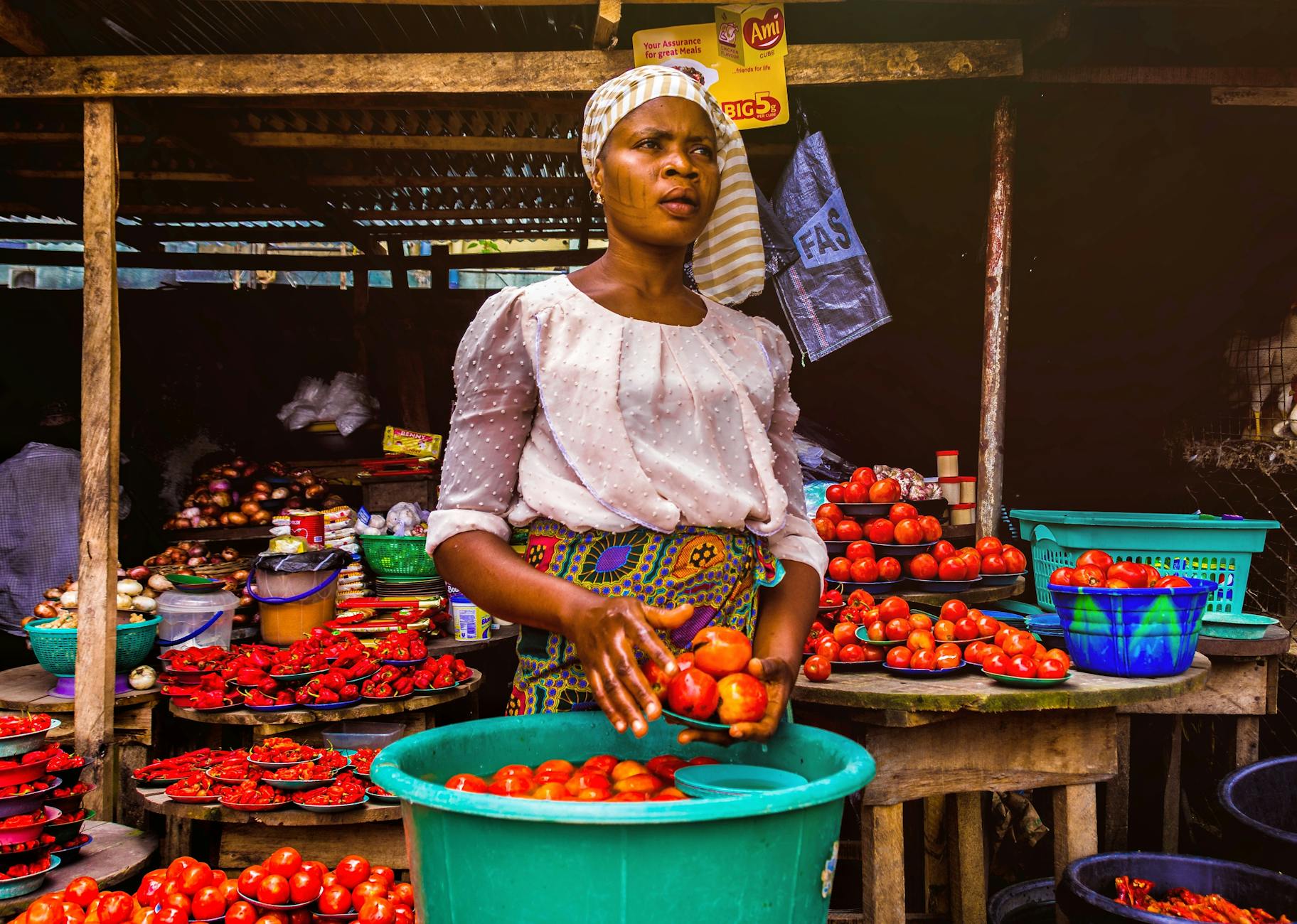 Photo by Omotayo Tajudeen
Photo by Omotayo Tajudeen
Here are some common techniques:
- Grilling: Known as “Yang,” it adds a smoky flavor to meats and vegetables. Think of skewers of juicy chicken satay or grilled fish.
- Frying: “Tod” involves deep-frying items like spring rolls or fried chicken, resulting in a crispy exterior and tender inside.
- Steaming: “Neung” keeps nutrients in, making it ideal for seafood and dumplings. It helps preserve the natural flavors.
Traditional methods also include using a mortar and pestle to grind spices and herbs, which enhances the aroma and taste of the food.
For a deeper dive into these techniques, Siam Recipes provides an excellent overview.
These cooking methods, combined with the rich variety of ingredients, create the unforgettable experience that is Thai street food. As you explore the bustling markets and food stalls, you’ll notice how each vendor has mastered these techniques to serve dishes that are not only delicious but also visually appealing.
Popular Street Food Dishes in Bangkok
Bangkok, a paradise for street food lovers, offers a plethora of dishes that are sure to tantalize your taste buds. Here are some of the must-try street food items that capture the essence of Bangkok’s culinary scene.
Pad Thai
 Photo by Markus Winkler
Photo by Markus Winkler
Pad Thai is perhaps the most famous Thai street food dish. This stir-fried noodle delight includes rice noodles, shrimp, tofu, bean sprouts, peanuts, and scrambled eggs. There’s also a blend of tamarind, fish sauce, and sugar that gives it a distinct sweet-sour flavor. Originating in the mid-20th century as part of a social identity campaign, Pad Thai has now become a symbol of Thai cuisine worldwide. Curious about more details on its origin? Check out this article on Pad Thai.
Som Tum (Green Papaya Salad)
Som Tum is a refreshing and spicy salad made from unripe green papaya. This dish features a balanced blend of sour lime, hot chili, salty fish sauce, and sweet palm sugar. Ingredients like tomatoes, long beans, and peanuts are also commonly added. Making Som Tum involves pounding the ingredients using a mortar and pestle, ensuring the flavors meld together harmoniously. Want to see the recipe? Check out this detailed guide.
Moo Pad Krapow (Basil Pork)
Moo Pad Krapow, or basil pork, is a classic Thai dish that highlights the use of Thai holy basil. The dish usually consists of ground pork stir-fried with garlic, chilies, and basil leaves. Typically served over rice and topped with a fried egg, it’s a hearty and flavorful meal that’s perfect for any time of the day. The combination of spicy, savory, and aromatic flavors makes Moo Pad Krapow a staple in Thai cuisine. For more insights, visit this page on Pad Krapow.
Khao Pad (Fried Rice)
Khao Pad, or fried rice, is a versatile dish with numerous variations. At its core, Khao Pad is made with rice, eggs, onions, and a source of protein such as shrimp, chicken, or pork. Various vegetables and seasonings like fish sauce and soy sauce are also added to enhance the flavor. This dish is often garnished with cucumber slices, cilantro, and lime wedges. The beauty of Khao Pad lies in its adaptability to include different toppings and ingredients based on what’s available. Discover more about its variations here.
Bangkok’s vibrant street food culture offers an endless array of flavors and experiences. These dishes are just the beginning of what you can explore on the bustling streets of the city.
Where to Find Street Food in Bangkok
Bangkok is a paradise for street food lovers. With every corner teeming with mouth-watering flavors, deciding where to start can be overwhelming. Here are some of the best locations to experience authentic Thai street food in Bangkok.
Yaowarat Road (Chinatown)
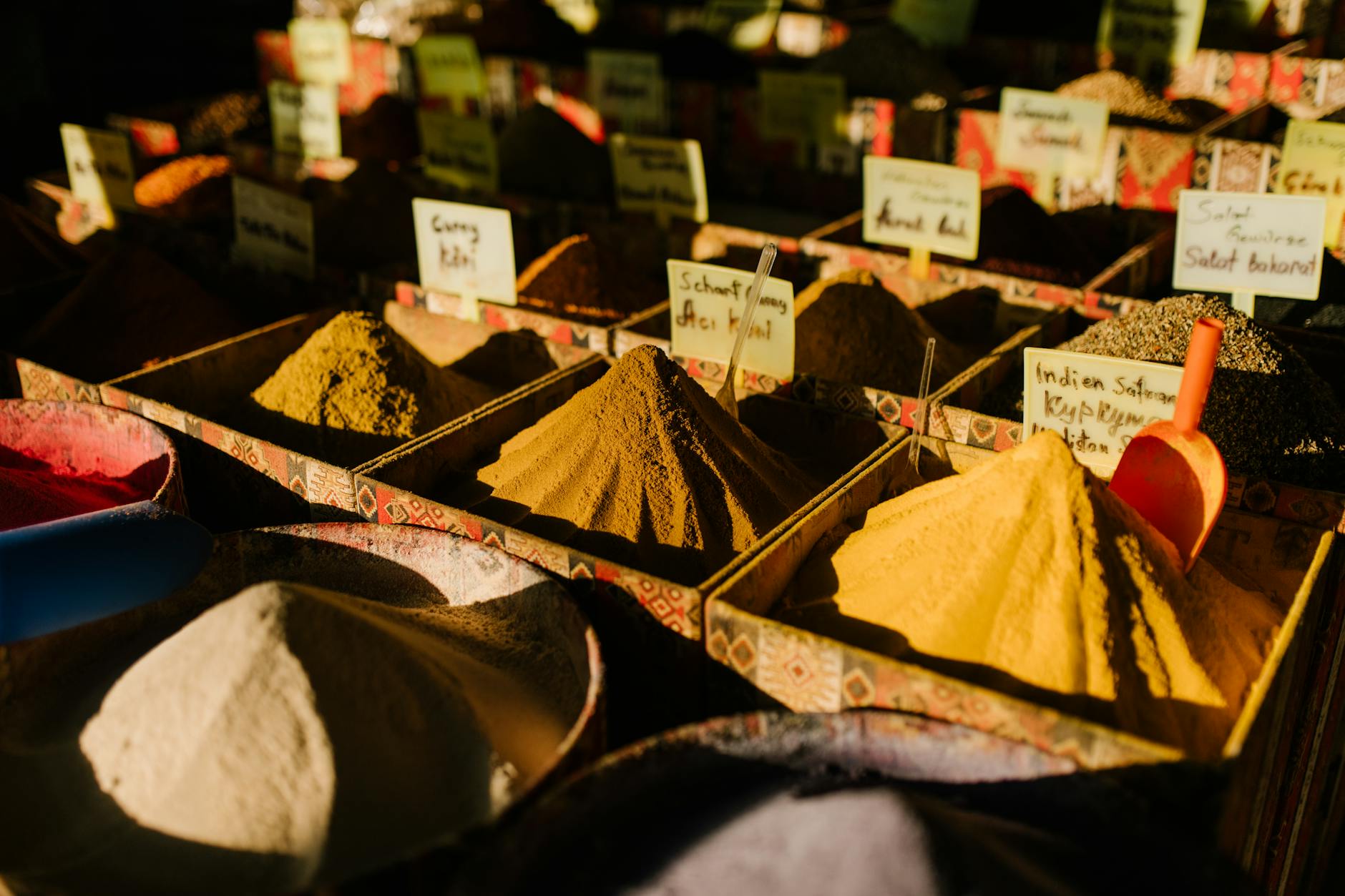
Photo by Julia Volk
Yaowarat Road, also known as Bangkok’s Chinatown, is an absolute must-visit for every food enthusiast. This bustling area is famous for its night market, where you can indulge in an array of delectable street food dishes. From savory to sweet, every bite here is an explosion of flavors.
Some of the top picks include:
- Khao Gaeng Jek Pui: Beloved for its plate rice and curry.
- Krua Phon Lamai: Known for its sizzling Rad Na noodles.
- Yaowarat Toasted Bread: A sweet and hearty treat.
For a deeper dive into the delights of Yaowarat, check out this detailed guide or these must-eat places.
Chatuchak Weekend Market
Chatuchak Weekend Market is another treasure trove for food lovers. Known for being one of the largest markets in the world, it offers a vast range of street food options that will leave your tastebuds tingling.
Some must-try foods include:
- Khanom Krok (Thai Coconut Pancakes): Delightfully soft and sweet.
- Som Tam (Thai Papaya Salad): A perfect blend of spicy, sour, and sweet.
- Mango Sticky Rice: A traditional Thai dessert.
Whether you’re looking for a complete meal or a light snack, Chatuchak has something for everyone. You can explore the best food stalls here or discover more about the market.
Sukhumvit Soi 38
Sukhumvit Soi 38 is a haven for street food lovers searching for a convenient yet diverse dining experience. Located near the Thong Lo BTS station, it’s easy to access and offers a plethora of delicious options.
Some highlights include:
- Pad Thai: The iconic stir-fried noodle dish.
- Moo Ping (Grilled Pork Skewers): Savory and succulent.
- Khao Niew Ma Muang (Mango Sticky Rice): Another favorite Thai dessert.
If you want to savor the best that Sukhumvit Soi 38 has to offer, take a look at this street food guide or read this review for insights.
Bangkok’s street food scene is incredibly rich and diverse. Each of these locations offers a unique taste of Thailand, ensuring that every food pilgrimage will leave you craving more.
Street Food Etiquette in Thailand
When it comes to enjoying Thai street food, there are certain unwritten rules and cultural norms that can help you have an enriching experience. Not only does this ensure that you respect local customs, but it also makes your food adventure more enjoyable. Here are some key points to keep in mind regarding ordering, paying, and dining practices.
Ordering and Paying
 Photo by Markus Winkler
Photo by Markus Winkler
Approaching a street food vendor in Thailand may seem daunting at first, but it’s pretty straightforward once you know the basics.
- Approach with a Smile: Thai people are known for their friendliness, so smiling when you approach a vendor can go a long way.
- Point to Order: If you’re unsure of what a dish is called, pointing to it is perfectly acceptable. Most vendors are used to this and won’t mind.
- Learn Basic Thai Phrases: Simple phrases like “aroi mak” (very delicious) or “kòp kun kâ” (thank you) can make the experience more pleasant.
- Payment: Most vendors only accept cash, so make sure you have small bills and coins. Paying immediately after receiving your food is the common practice.
For more on how to effectively order and pay for your street food, you can check out this detailed guide on Thai street food culture.
Dining Practices
When it comes to eating your street food in Thailand, there are a few important norms to keep in mind.
- Sharing is Caring: Thai people love sharing food. If you’re with a group, order a variety of dishes and share them.
- Using Utensils: Thais primarily use forks and spoons. The spoon is used for eating, while the fork is used to push food onto the spoon. Chopsticks are generally used for noodle dishes.
- Clean Up After Yourself: It’s considered polite to dispose of your trash, including tissues and food wrappers, in designated bins.
To dive deeper into Thai dining etiquette, you might find this comprehensive resource on Thai table manners quite helpful.
By keeping these tips in mind, you’ll navigate the bustling streets of Bangkok like a local and fully enjoy the incredible street food offerings.
Health and Safety Considerations
Street food in Bangkok is a delightful experience, but it’s important to keep health and safety in mind. Here are some tips to enjoy your foodie adventure safely.
Choosing Clean Stalls
Selecting the right food stall can make a big difference. Here are some tips to help you pick clean and reputable stalls:
- Follow the Crowd: If you see many locals eating at a stall, it’s usually a good sign. Local residents know the best spots and prioritize cleanliness and taste.
- Check for Cleanliness: Look at the vendor’s station. Are the cooking areas clean? Do the vendors wear gloves? Are they using clean utensils? These are all good indicators of hygiene.
- Observe Food Handling: Watch how the food is being prepared and served. Good vendors handle food with care, use tongs, and avoid touching food with bare hands.
- Inspect the Stall’s Environment: The location of the stall matters. Avoid stalls near open drains or piles of trash as they can attract pests.
Remember, eating street food can be safe and enjoyable when you pick the right places. Read more on what to look out for.
 Photo by Laura James
Photo by Laura James
Food Freshness
Fresh food is not just delicious; it helps in preventing foodborne illnesses. Here’s how to ensure your street food is fresh:
- Watch the Cooking: Choose stalls where food is cooked right in front of you. This guarantees that your meal hasn’t been sitting out for hours.
- Ask Questions: Don’t hesitate to ask the vendor when the food was prepared. Fresh ingredients and freshly cooked items are key to a healthy meal.
- Look for Refrigeration: Check if cold items like seafood or desserts are stored in coolers or on ice.
- Trust Your Senses: Use your senses—look, smell, and even touch (when appropriate) to gauge freshness. If something smells off or looks old, it’s best to avoid it.
By following these tips, you can enjoy Bangkok’s street food without worrying about your health. Want more tips? Check this out.
Conclusion
Bangkok’s street food scene is an indispensable part of Thai culture, offering a sensory journey through diverse flavors and dishes. From spicy som tam to savory pad thai, each bite tells a story of tradition and innovation.
Explore Bangkok’s vibrant food stalls and savor the authentic taste of Thailand. Take a culinary adventure that not only satisfies your appetite but also connects you deeper with the local culture.
Don’t miss out—immerse yourself in the rich tapestry of Bangkok street food on your next visit. Your palate will thank you.

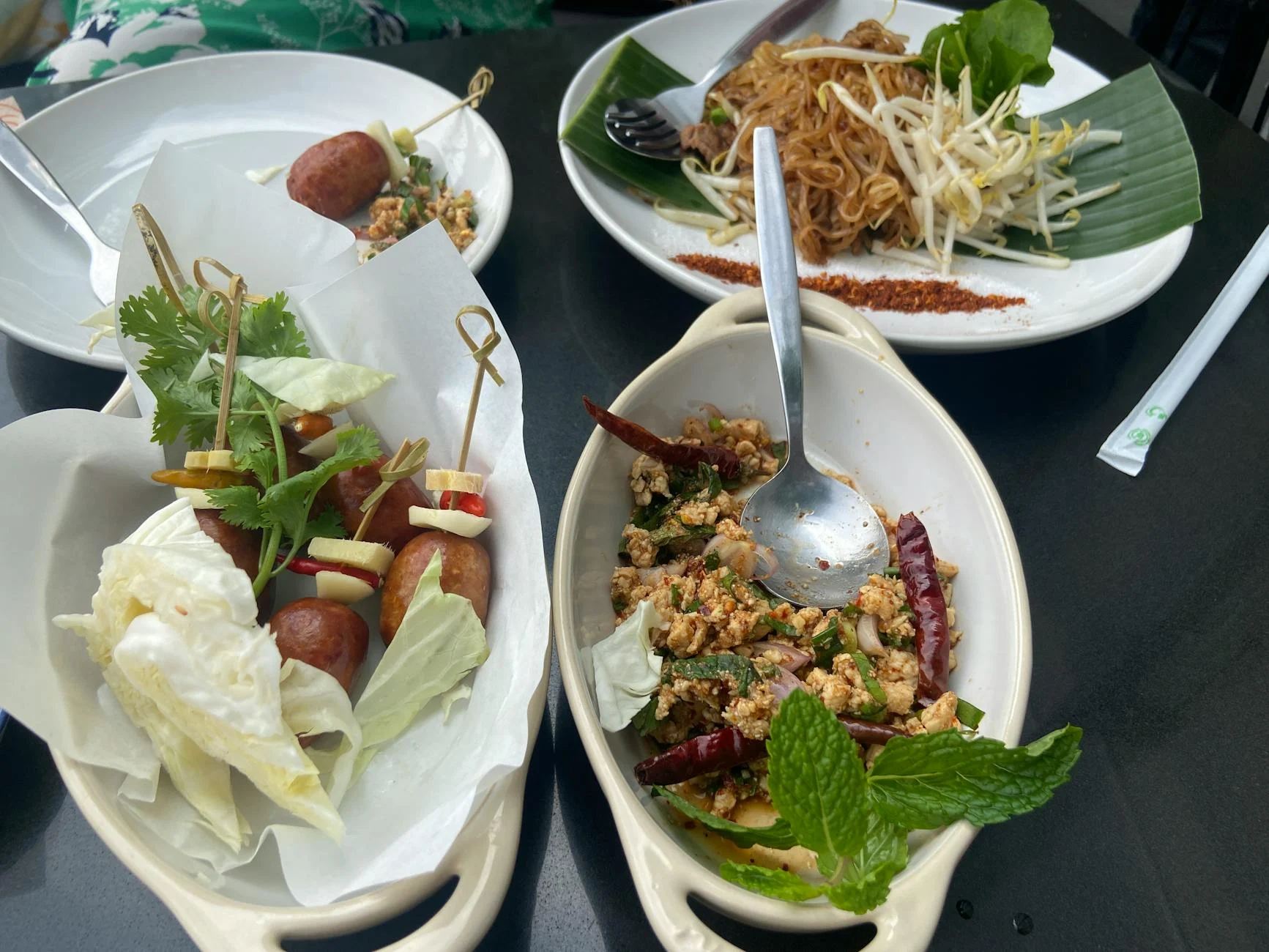
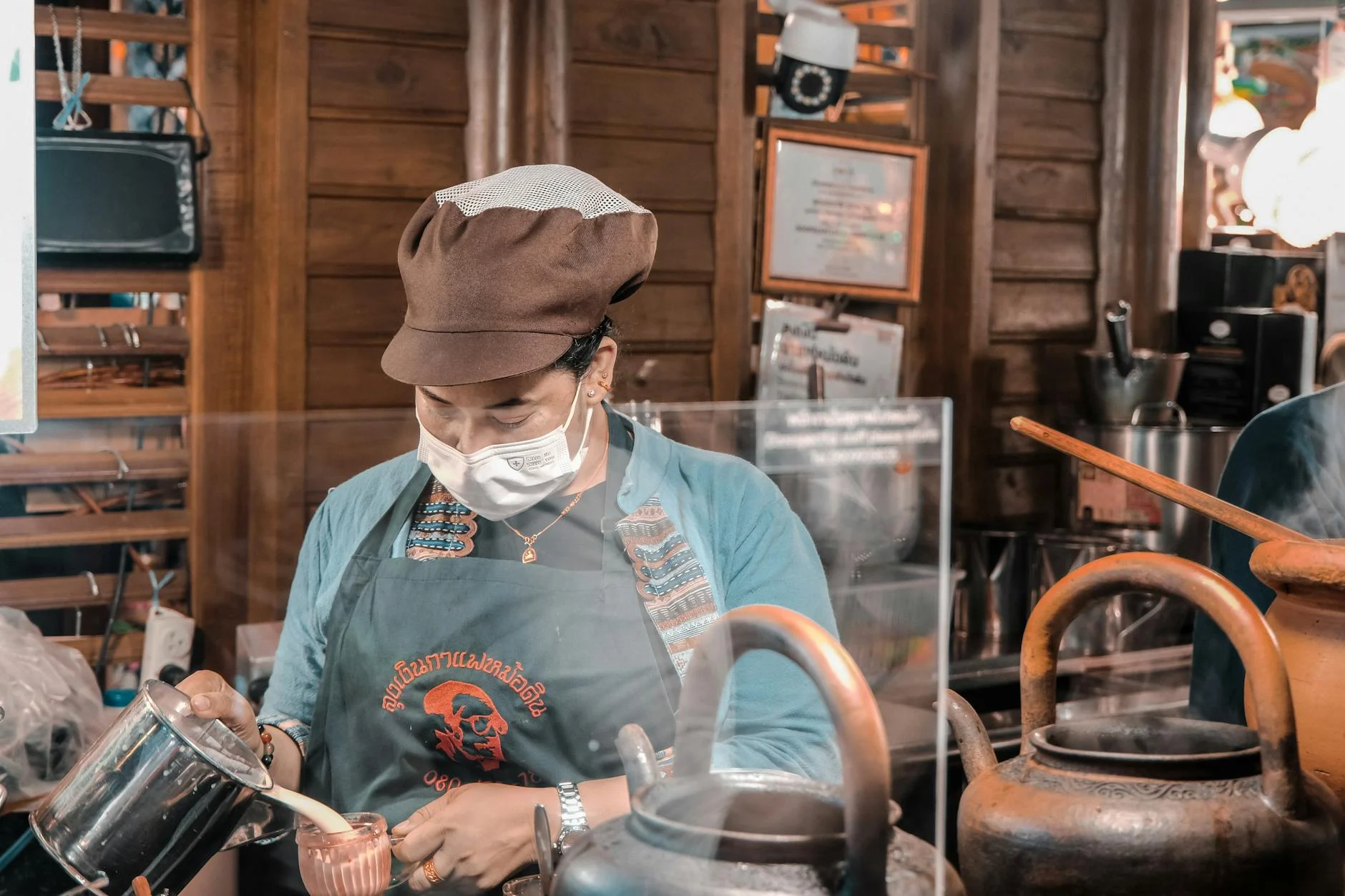
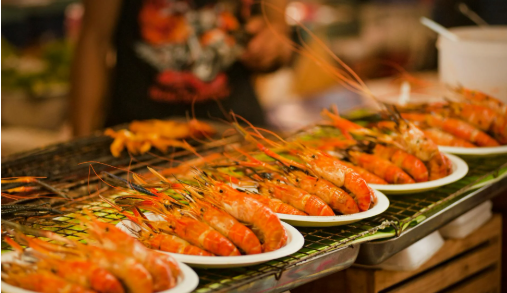


Leave a Reply